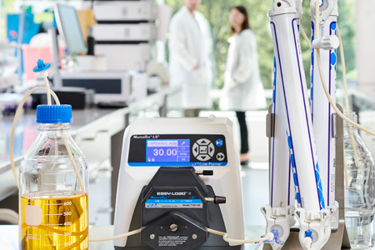Process Optimization And Scalability Evaluation Of Pellicon® Capsules For SPTFF Of mAb-Based Biomolecules

Single-pass tangential flow filtration (SPTFF) is a method of ultrafiltration for the purposes of either volume reduction or protein concentration. This versatile method has been successfully implemented between unit operations throughout the downstream production process of biopharmaceuticals. Its value lies in the simplicity of operation as well as its small footprint and equipment requirement.
SPTFF differs from traditional batch tangential flow filtration (TFF) in several ways. Traditional batch TFF requires recirculation of the feed material through the membrane module multiple times to achieve a higher concentration with each passage as the filtrate is removed. SPTFF uses just one pass through multiple membrane modules connected in series—increasing the path length—to achieve the same volume reduction over time as the traditional batch mode. Due to the single-pass operation, there is no need to return the feed to the original tank, which in many cases can eliminate tankage altogether. Further, SPTFF is typically run at lower feed flow rates to increase conversion of feed to permeate; this allows for smaller pumps and pipe sizes, which reduce hold-up volume within the system and increases product recovery compared to batch TFF. SPTFF is also a gentler option for shear sensitive molecules.
This document describes the principles of SPTFF and how to determine operating conditions to achieve the target concentration factor with single-use Pellicon® Capsules.
Get unlimited access to:
Enter your credentials below to log in. Not yet a member of Bioprocess Online? Subscribe today.
